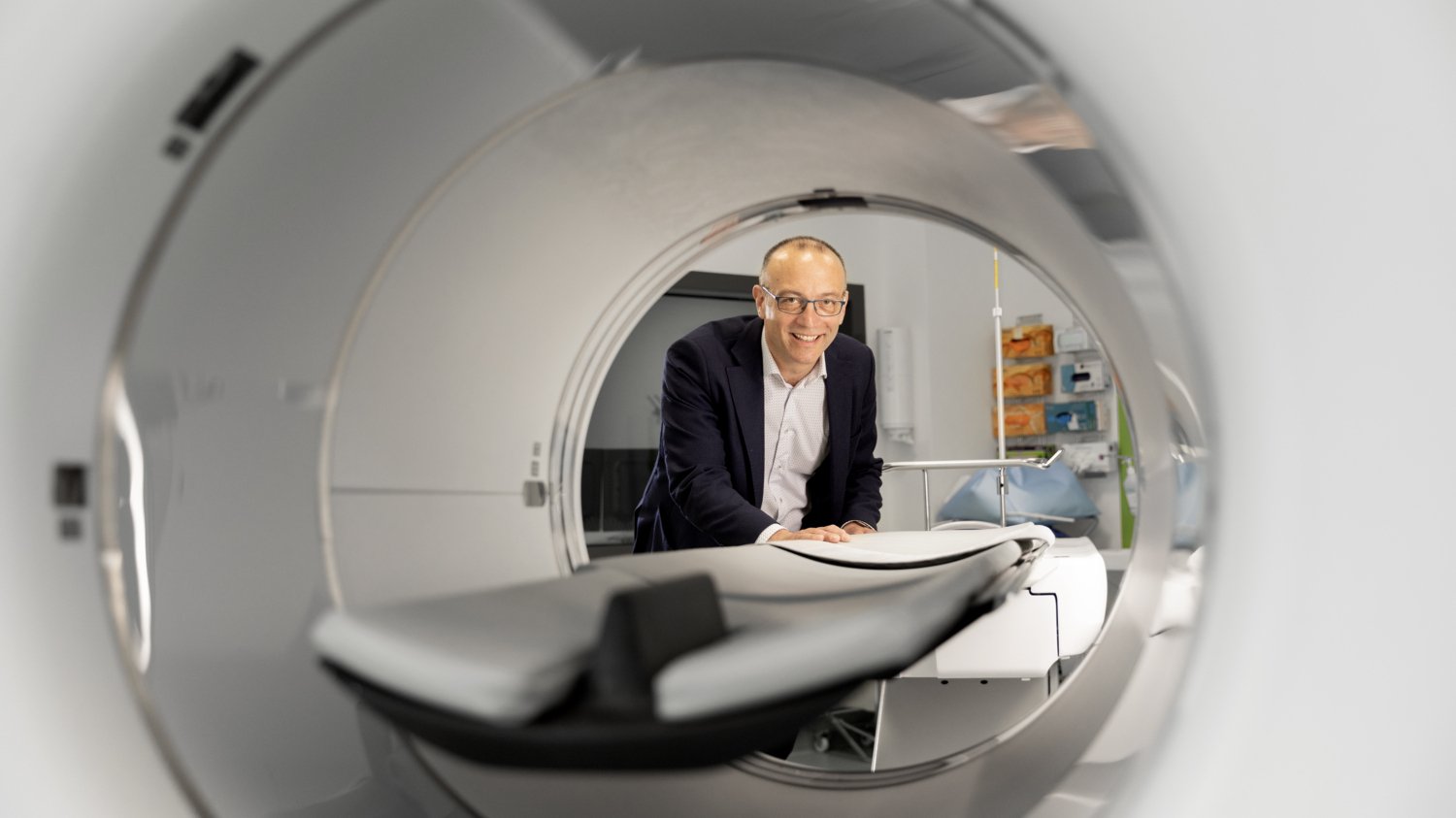Studies what happens in the brain with Parkinson’s disease

Andrea Varrone uses PET technology to study how the brain changes in Parkinson’s disease. His aim is to develop new imaging tools that can be used for making early diagnoses and measuring the effects of different therapies. Meet one of the new professors of Karolinska Institutet who will participate in this year's installation ceremony at Aula Medica on 3 October.
Text: Karin Tideström, for KI’s installation ceremony booklet 2024
What are you researching?
“I use an imaging technique called positron emission tomography, or PET, to examine how Parkinson’s disease affects the brain. PET enables us to study how the brain works in normal cases and how its functionality changes in the presence of psychiatric or neurological disease. One of our focuses is how the dopamine-producing cells deteriorate in Parkinson’s disease."

"An important goal of my research is also to develop new imaging markers in order to improve diagnostics and therapeutic evaluation. We have, for instance, developed and validated a tracer able to measure how the dopamine-producing cells degenerate and we’re evaluating another tracer that can be used to study how synaptic function changes in the Parkinson’s brain. We’re also trying to understand the role inflammation plays in the disease.”
Why is this important?
“In Parkinson’s disease, early diagnosis and the ability to distinguish it from other Parkinson’s-like diseases are important. This is where these imaging markers come in. They can also be used to measure the effect of treatments, such as during clinical trials of new drugs.”
What are your main findings to date?
“Apart from the development of the tracers, we’ve been able to demonstrate that it’s the terminals of the dopamine producing cells, the synapses, that degrade first, while nerve fibres and cell bodies remain relatively intact. This implies that we should be able to slow down or modify the disease course at early stages of the disease by restoring synaptic function."
About Andrea Varrone
Professor of Molecular Positron Emission Tomography at the Department of Clinical Neuroscience (CNS)
Andrea Varrone was born in 1970 in Naples, Italy. A trained doctor specialised in nuclear medicine, he earned his PhD in 2003 at Rome’s Sapienza University. He joined Karolinska Institutet as an assistant professor in 2007, becoming a docent and senior lecturer in nuclear medicine in 2012. Since 2018, he has led a research group studying molecular brain imaging in neurodegenerative diseases. Andrea Varrone was appointed Professor of Molecular Positron Emission Tomography at Karolinska Institutet on 4 September 2023.
